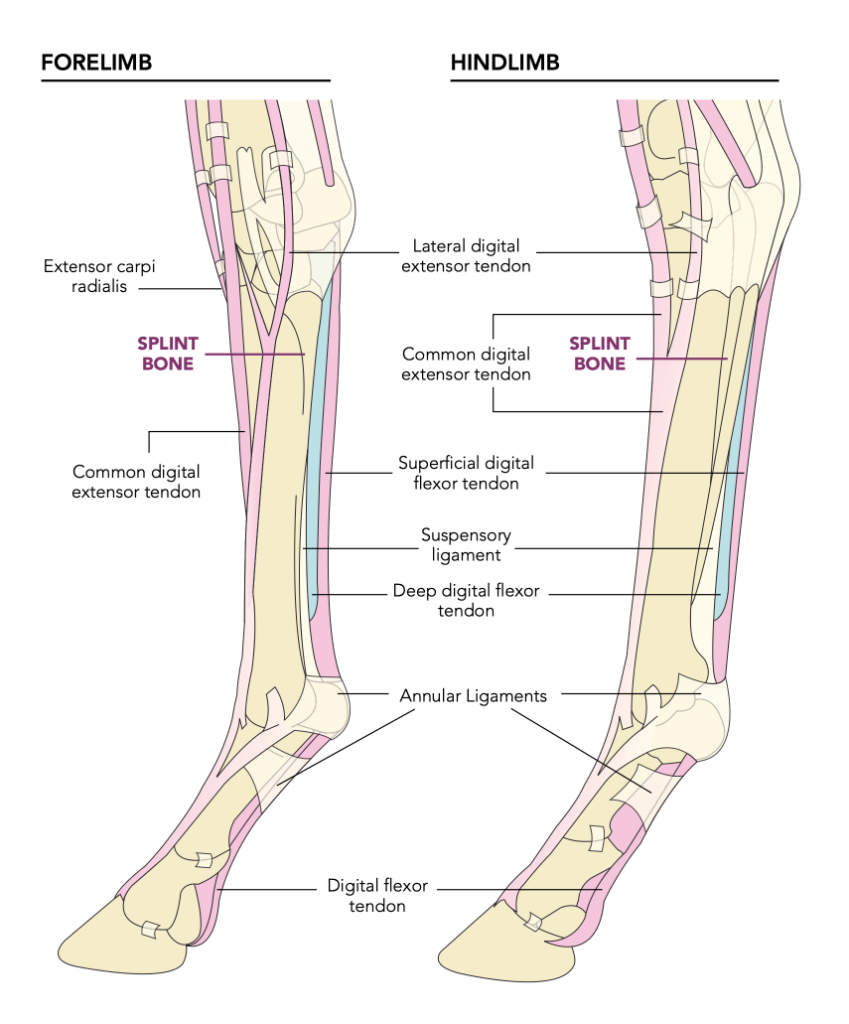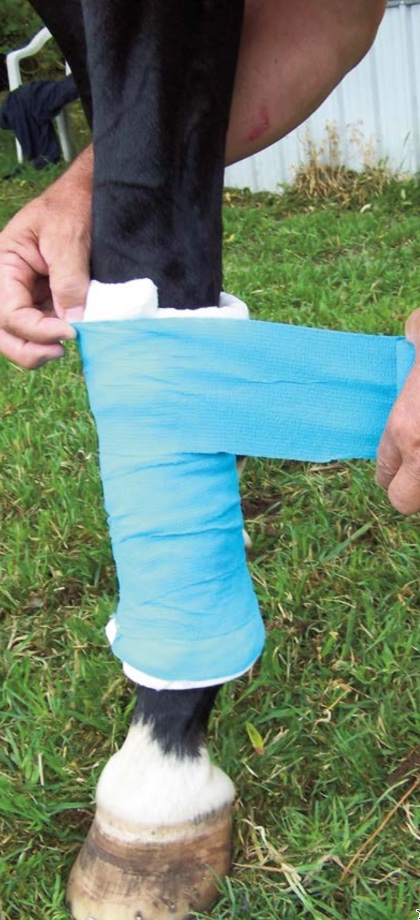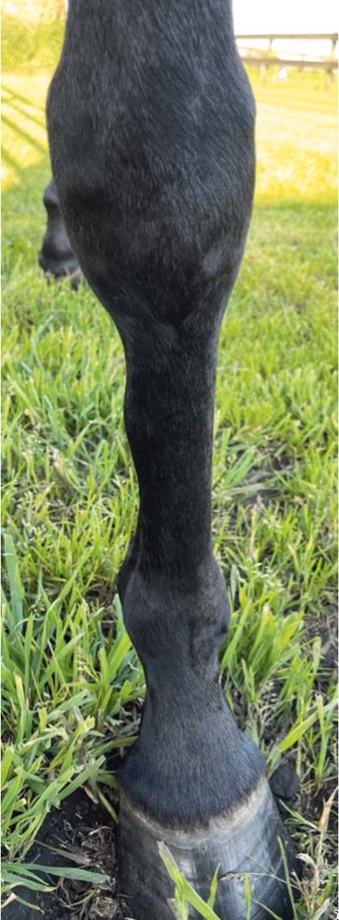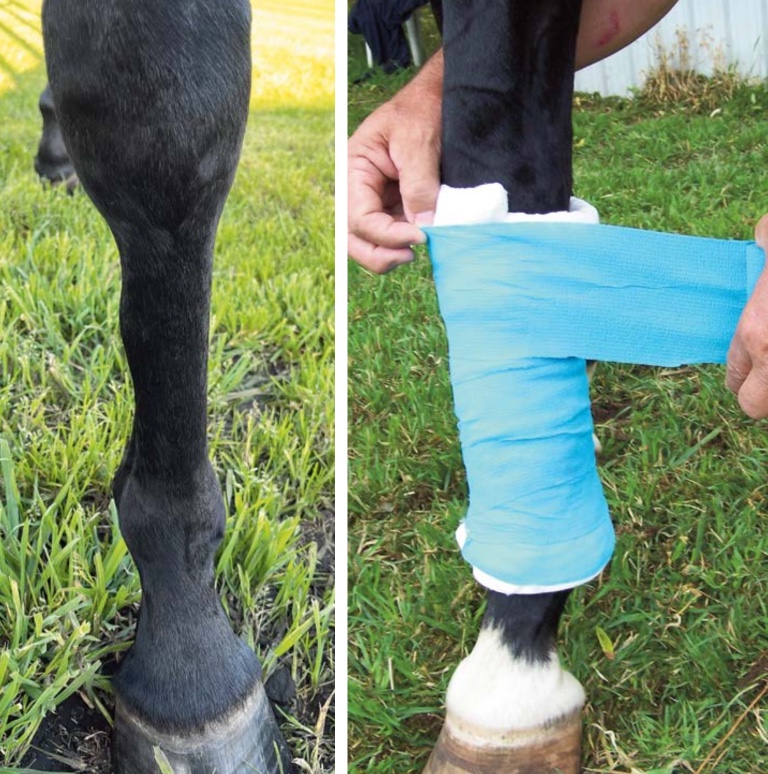“Splints” is the common term given to an inflammatory condition of the splint bones of the leg. Here, we are going to have a look at the anatomy, what the condition is and how it is best managed.
Anatomy
On the inside and outside of the cannon bone there are two long, narrow bones – these are the splint bones. They start at the knee in the front limb and the hock in the hindlimb and taper/narrow as they run down the limb; they end in a small knob about two-thirds of the way down the cannon bone above the fetlock. They are covered by a tough, thin, fibrous sheet – periosteum.
Between each of the splint bones and the cannon bone is the interosseous ligament. This is a dense connective tissue that ossifies (becomes boney)
as the horse matures. The ossified ligament fuses the cannon bone and splint bones and usually occurs in most horses by the time they are three to four years of age.
What are splints?
What are the causes?

Where do they occur?
The majority of splints develop on the medial side (inside) of the limb and tend to be more common in the forelimbs. They can, however, occur on the lateral (outside) and in the hind limbs.
The medial splint bone is more commonly involved because it has a flat surface next to the knee, whereas the lateral one has a more slanted surface. It seems that the medial splint bone probably bears more weight than the lateral one, and so is subjected to more stress.
What aged horses are vulnerable to splints?
As mentioned previously, the interosseus ligament is more vulnerable to damage in the younger horse, and as a result, splints are more common in the two to three year old, but sometimes up to four years old. They usually occur when these young horses are undergoing training in some form.
What are the treatment options?
There are many ways that splints are managed, but the most important
and mandatory management is rest. Veterinarians may use anti-inflammatory medications and techniques to help reduce inflammation and help prevent excessive bone growth. This may help with a more acceptable cosmetic appearance.
Prognosis
The prognosis for the majority of horses is good to excellent. Once the acute inflammation has subsided, then the horse can gradually return to work. Most cases will have a firm swelling; however, this is usually not painful once the acute inflammation has resolved. Exceptions are those that have a very large bone swelling that interferes with the joint or the suspensory ligament.


Splints are the result of trauma to the periosteum or the interosseous ligament and result in new bone formation at the location of the injury.
The conservative management of splints includes:
Rest – Complete rest until the splint is no longer painful to palpate. This usually takes about six weeks, ranging from three weeks to three months.
Topical Cold Therapy – Icing and cold therapy help decrease the swelling.
Pressure Bandaging – This is used to help reduce swelling.
Non-Steroidal Anti- Inflammatory Drugs (NSAID) – E.g. Phenylbutazone help reduce swelling.
Topical Anti-Inflammatory Drugs – E.g. DMSO or Voltaren help reduce swelling.
Lasers, Ultrasound, Shockwave Therapy – May help in healing, but their use may be controversial.
Surgery – If the exostoses are large and impinge on the suspensory ligament, then surgical intervention may be recommended.
Prevention
The risk can be minimised by the following:
- Slow down the intensity and the frequency of training for a young horse
- Ensure proper nutrition
- Avoid obesity
- Maintain appropriate foot care
- For those with limb interference – use protective splint boots
Summary
Splints are inflammation and development of exostoses associated with the splint bones. They are more common in younger horses as a result of trauma. They carry a good prognosis with appropriate management, including rest.
If you are worried about the development of splints in your young horse, then please consult your veterinarian.

